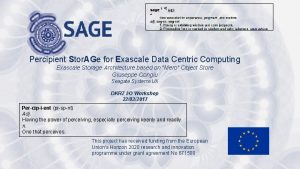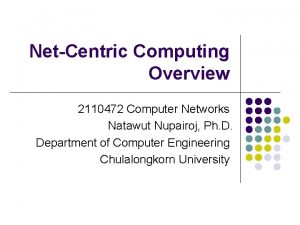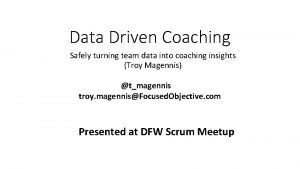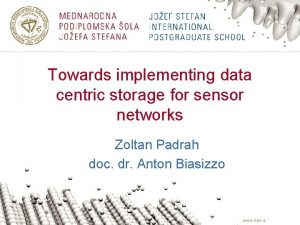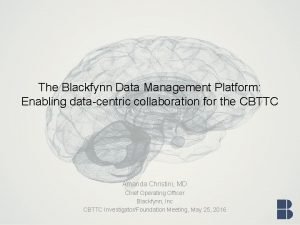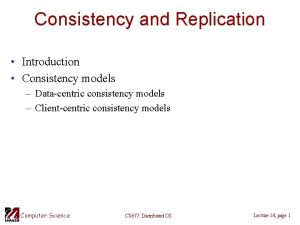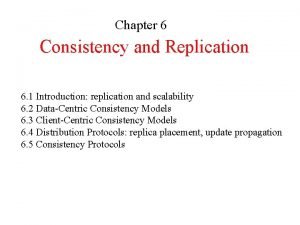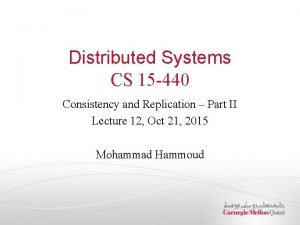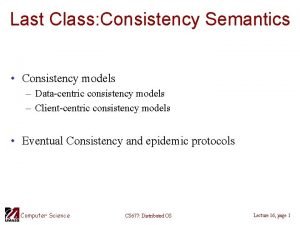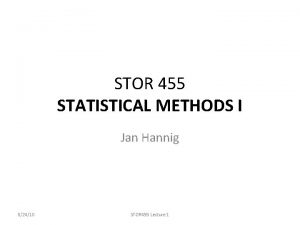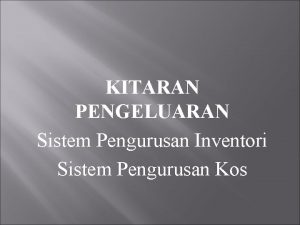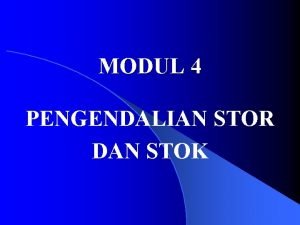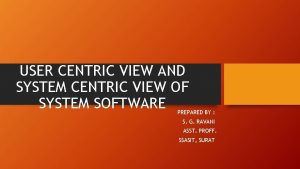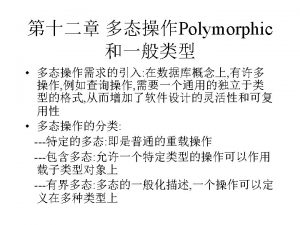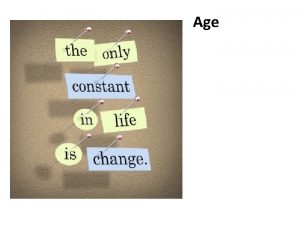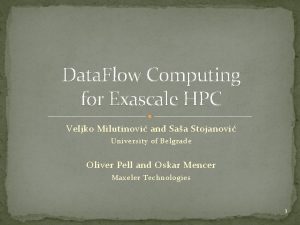Percipient Stor AGe for Exascale Data Centric Computing


















- Slides: 18

Percipient Stor. AGe for Exascale Data Centric Computing Exascale Storage Architecture based on “Mero” Object Store Giuseppe Congiu Seagate Systems UK DKRZ I/O Workshop 22/03/2017 Per-cip-i-ent (pr-sp-nt) Adj. Having the power of perceiving, especially perceiving keenly and readily. n. One that perceives. This project has received funding from the European Union’s Horizon 2020 research and innovation programme under grant agreement No 671500

Storage cannot keep up w/ Compute! Way too much data Way too much energy to move data New Storage devices use unclear Opportunity: Big Data Analytics and Extreme Computing Overlaps Storage Problems at Extreme Scale

Big (Massive!) Data Analysis Extreme Computing • • Changing I/O needs HDDs cannot keep up • Avoid Data Movements • Manage & Process extremely large data sets Need Exascale Data Centric Computing Systems Big Data Extreme Computing (BDEC Systems) SAGE Validates a BDEC System which can Ingest, Store, Process and Manage extreme amounts of data SAGE Project Goal

Research Areas

• • Goal – Build the data centric computing platform Methodology – Advanced Object Storage – New NVRAM Technologies in I/O stack – Ability for I/O to Accept computation • Incl. Memory as part of storage tiers – API for massive data ingest and extreme I/O – Commodity Server & Computing Components in I/O stack Percipient Storage Overview

Percipient Storage Modes of Operation

Percipient Storage Architecture

Percipient Storage Architecture (

• Primary Goal – Provide monitoring tools with telemetry data • Methodology – Mero has “ADDB” Infrastructure ( Analysis and Diagnostics Data Base) – Structured telemetry records produced by the various subsystems – It will now be exposed through the “Clovis” Management Interface – ADDB Records can feed into tools • Allinea will be consuming ADDB records in the SAGE project – Records can be kept in local Mero nodes and Map-Reduce style analysis can also be performed Perspective on Monitoring. .

• Primary Goal – Demonstrate Use Cases & Co-Design the system • Methodology – Obtain Requirements from: • Satellite Data Processing • Bio-Informatics • Space Weather • Nuclear Fusion (ITER) • Synchrotron Experiments • Data Analytics Application – Detailed profiling supported by Tools – Feedback requirements from platform SAGE Co-Design

ü Completed Co-Design Process – First Phase SAGE Co-Design. .

• Goal – Explore tools and services on top of Mero ü Completed Design of HSM ü Completed Design of p. NFS ü Completed scoping/Arch of Data Integrity Checking ü Completed scoping/Arch of Performance Analysis Tools • Methodology – “HSM” Methods to automatically move data across tiers – “p. NFS” parallel file system access on Mero – Scale out Object Storage Integrity checking service provision – Allinea Performance Analysis Tools provision Services, Systemware & Tools

• • Goal – Explore usage of SAGE by programming models, runtimes and data analytics solutions Methodology – Usage of SAGE through MPI and PGAS • Adapt MPI-IO for SAGE • Adapt PGAS for SAGE – Runtimes for SAGE • Pre/Post Processing – Volume Rendering ü MPI-IO for SAGE Design available ü Runtimes design available ü Framework for data analytics available ü PGAS for SAGE being studied • Exploit Caching hierarchy – Data Analytics methods on top of Clovis • Apache Flink over Clovis, looking beyond Hadoop • Exploit NVRAM as extension of Memory Programming Models and Analytics

• • Goal – Hardware definition, integration and demonstration Methodology – Design and Bring-up of SAGE hardware • Seagate Hardware • Atos Hardware – Integration of all the software components • From WP 2/3/4 – Integration in Juelich Supercomputer Center – Demonstrate use cases • Extrapolate performance to Exascale • Study other Object stores vis-à-vis Mero ü Design & Definition of base SAGE hardware complete Prototype being tested in Seagate Integration & Demonstration

SAGE Prototype Ready for Shipping to Juelich

• • M 1 (Sept 2015) – Project Start M 3 – Draft System architecture M 9 – Co-Design Inputs from Apps Complete M 12 – Design of Key Software Components ( 1 st Draft) M 18 – Prototype system available ( Seagate) M 27 – Design of All Software Components ( 2 nd Draft) M 18 – M 28 – Prototype system testing/system integration in Juelich • M 28 – M 36 – Application use cases and performance tests of the SAGE Platform in Juelich Overall Project Timeline

Coordinator: Seagate Consortium

Questions ? giuseppe. congiu@seagate. com sai. narasimhamurthy@seagate. com
 Network centric computing and network centric content
Network centric computing and network centric content Aktiv expektans
Aktiv expektans Exascale definition
Exascale definition Net-centric computing
Net-centric computing Iron age dates
Iron age dates Iron age bronze age stone age timeline
Iron age bronze age stone age timeline Data driven coaching
Data driven coaching Data-centric storage
Data-centric storage Data-centric pathology
Data-centric pathology Data centric consistency model
Data centric consistency model Explain data centric consistency model
Explain data centric consistency model Continuous consistency in distributed system
Continuous consistency in distributed system Consistency in science
Consistency in science Client-centric consistency
Client-centric consistency Telia bredband start cd
Telia bredband start cd Stor+
Stor+ Adjektiv stor
Adjektiv stor Stor 455
Stor 455 Ciri inventori pengurusan stor yang baik
Ciri inventori pengurusan stor yang baik


